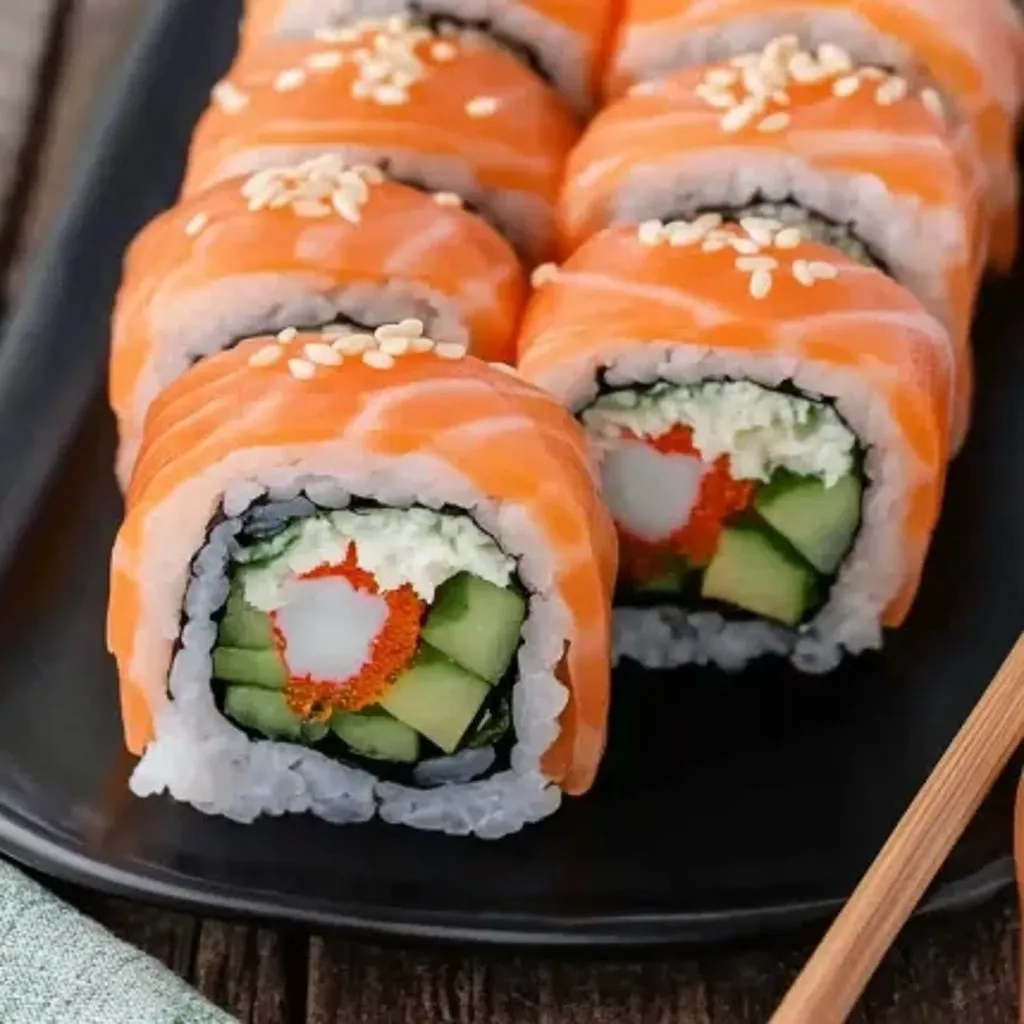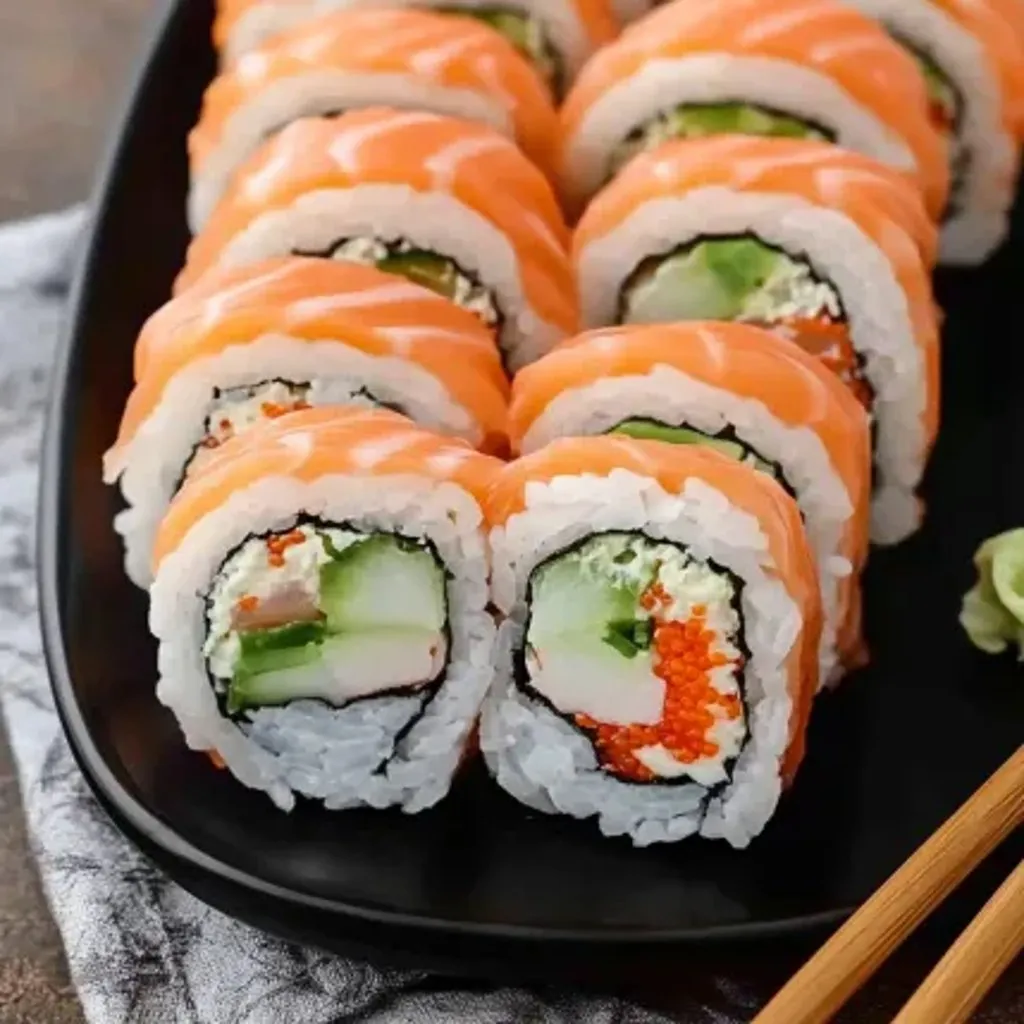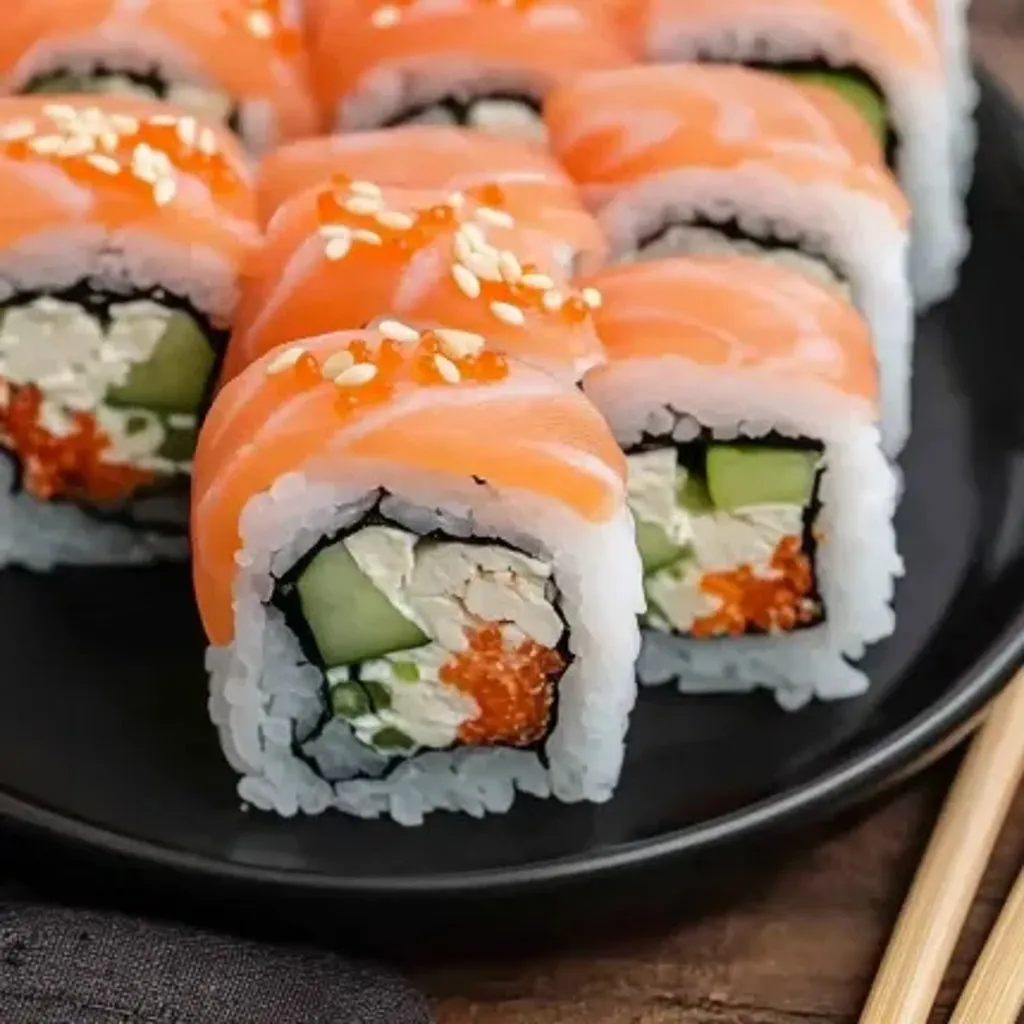 Bookmark
Bookmark
This fresh Alaska Roll brings together creamy avocado, tender krab, and sushi-grade salmon for a balanced sushi experience. The sushi rice, seasoned with vinegar, sugar, and salt, provides a perfect base that holds everything together while highlighting the delicate flavors.
I first tried making this roll when craving sushi but wanted control over freshness. Now it is a regular for weekend dinners, impressing friends and family alike.
Ingredients
- Water: four cups to cook the rice evenly and achieve the right texture
- Uncooked white rice: two cups preferably short grain for sticky sushi consistency
- Seasoned rice vinegar: half a cup adds subtle tanginess and balances flavors
- White sugar: one teaspoon to gently sweeten the rice mixture
- Salt: one teaspoon to enhance overall taste
- Krab meat sticks: six ounces or cooked crab add savory sweetness and texture
- Japanese mayonnaise: two tablespoons lends creaminess and a mild tang
- Nori sheets: four dry seaweed sheets used as the roll wrapper
- Avocado: one ripe avocado pitted and sliced for buttery richness
- English cucumber: one peeled and deseeded cucumber cut into thin strips for crisp freshness
- Sushi-grade salmon: six ounces thinly sliced to provide tender, fresh seafood flavor
- Toasted white sesame seeds: sprinkle on top for nuttiness and crunch
- Pickled ginger: to serve cleanses the palate between bites
- Low sodium soy sauce: to add umami dipping flavor
- Wasabi paste: for a spicy kick
Step-by-Step Instructions
- Cook Sushi Rice:
- Combine water and rice in a large pot over high heat and bring to a boil. Then reduce heat to medium-low, cover the pot, and let it simmer for about 20 to 22 minutes until the rice is tender and the water is fully absorbed. This gentle steaming method is key to fluffy sushi rice.
- Season Rice:
- Transfer the hot cooked rice to a large bowl. In a small bowl, mix the rice vinegar, sugar, and salt until dissolved. Gently fold this seasoning into the rice using a paddle or large spoon. Avoid mashing the rice to keep the grains intact. Let the rice cool for 20 to 30 minutes to reach room temperature.
- Prepare Nori and Rice:
- Wrap a bamboo sushi rolling mat in plastic wrap to keep it clean and prevent sticking. Place one nori sheet on a clean surface. Spread a thin, even layer of the cooled sushi rice over the nori leaving a small border at the edges to help sealing the roll later.
- Add Fillings:
- Flip the nori so the rice side faces down onto the mat. Mix the chopped krab meat with Japanese mayonnaise. Spread a thin line of this mixture along the center of the nori. Layer thin slices of avocado and cucumber strips on top of the krab mixture evenly.
- Roll Sushi:
- Using the bamboo mat, roll the sushi tightly into a log shape starting at the edge nearest you. After rolling, slice the salmon thinly and carefully drape the slices over the roll. Gently press down with the mat to help the salmon adhere to the roll.
- Finish and Slice:
- Sprinkle toasted sesame seeds over the top of the roll for extra flavor and texture if desired. Using a very sharp knife, slice the roll into six even pieces. Repeat this process to make a total of four rolls.
- Serve:
- Arrange the sushi pieces on a serving plate with pickled ginger, low sodium soy sauce, and wasabi paste on the side to customize each bite.
 Bookmark
Bookmark
I love the creamy avocado in this roll because it perfectly balances the salty krab and rich salmon. One family memory is how everyone gathered around the table to help roll sushi for a special occasion, making it a fun and interactive meal.
Storage Tips
Sushi is best enjoyed fresh but leftovers can be wrapped tightly in plastic wrap and refrigerated for up to 24 hours. Avoid freezing as the texture of rice and fish will degrade. When ready to eat, bring to room temperature for the best flavor.
Ingredient Substitutions
If krab meat is unavailable, cooked shredded crab or cooked shrimp make excellent alternatives. Avocado can be replaced with thin slices of mango for a sweeter twist. Use tamari or coconut aminos instead of soy sauce for a gluten-free option.
Serving Suggestions
Serve Alaska rolls alongside a light seaweed salad or edamame for a balanced meal. Pair with a chilled glass of dry sake or green tea to complement the fresh flavors.
Cultural Context
Sushi originated in Japan as a method of preserving fish in fermented rice but evolved into the fresh, artistic rolls enjoyed worldwide today. The Alaska Roll is a Western adaptation combining traditional Japanese sushi techniques with American ingredients like avocado and mayonnaise.
 Bookmark
Bookmark
Frequently Asked Questions About Recipes
- → What is an Alaska Roll?
An Alaska Roll is a sushi roll typically filled with crab or imitation crab, avocado, and cucumber, then topped with fresh salmon slices for a bright, fresh flavor.
- → Do I need special sushi rice for this recipe?
Yes, sushi rice is essential. It’s short-grain rice seasoned with rice vinegar, sugar, and salt, giving it the sticky texture that holds the roll together.
- → Can I use smoked salmon instead of raw salmon?
Absolutely! Smoked salmon is a safe and tasty option if you prefer not to use raw fish, and it gives the roll a slightly different, savory flavor.
- → How do I keep the sushi roll from falling apart?
Use a bamboo sushi mat wrapped in plastic to roll tightly, and make sure the rice layer is thin and even. A sharp knife dipped in water also helps when slicing.
- → Can I prepare Alaska rolls ahead of time?
They are best enjoyed fresh, but you can make them a few hours ahead. Keep them covered with plastic wrap in the fridge to prevent drying out.
- → Are there variations I can try?
Yes! Try adding cream cheese for extra richness, swapping avocado for mango for a fruity twist, or drizzling with spicy mayo for a kick of heat.
